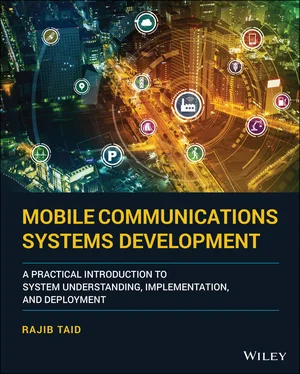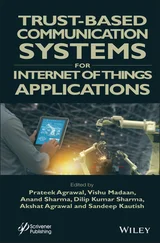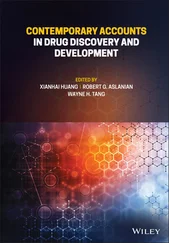UE/Mobile Station (MS) Identities
Radio Access Network (RAN), UMTS Terrestrial Radio Access Network (UTRAN), Evolved‐UMTS Terrestrial Radio Access Network (E‐UTRAN), 5G Next‐Generation Radio Access Network (NG‐RAN) Identities
CN Identities
Figure 5.1illustrates the above network identities along with their natures.

Figure 5.1 Network identities, their persistency, and presence.
A network element, or a subscriber, or a logical link between peer protocols or other logical resources are identified and addressed with their corresponding identities, which can be a permanent, temporary, static, or dynamic in nature, as shown in Figure 5.1. For example, the core network may allocate a temporary identity to a mobile device for paging purposes. The CN and the access network allocate a temporary identity to an MS/UE as a result of events such as the power off/on or changes in the current location of the mobile device. This is required to protect the real identity of a mobile device while communicating with the network over the air interface.
A permanent identity is assigned to a network element as part of its administrative provision, network planning, and configuration process. For example, an International Mobile Subscriber Identity (IMSI) is allocated to uniquely identify each mobile subscriber in the GSM, UMTS, LTE/EPS, and 5G systems and may be also used to page an MS/UE by the CN.
A network identity can be a local one, i.e. visible to a particular network element such as GSM Visitor Location Register (VLR), GPRS Serving GPRS Support Node (SGSN), and LTE/EPS Mobility Management Entity (MME), or it can be used/visible across the end‐to‐end network element, i.e. from the mobile device to base station controller (BSC), UTRAN, E‐UTRAN, and 5G NG‐RAN to Core Network.
A network identity can be a global one that is exchanged across an interface connecting two peer network elements. For example, in the LTE/EPC system, a UE and MME S1AP identity is exchanged between the eNodeB and the MME over the S1 interface to uniquely identify a UE. Note that the network identities have different lengths.
There are network identities that are permanent and unique in nature. Examples of permanent network element identities are mentioned below:
An MS/UE is assigned an International Mobile Equipment Identity (IMEI) by its manufacturer that is burnt into the firmware of an MS/UE.
An IMSI is assigned by an operator to a subscriber during its provisioning in the database of the Home Location Register (HLR). An IMSI is stored in the SIM card of an MS/UE.
A Public Land Mobile Network (PLMN) identity of a network consists of the Mobile Country Code (MCC) and Mobile Network Code (MNC). A PLMN uniquely and globally identifies the operator of a particular network as an MCC is allocated by the International Telecommunication Union (ITU).
An operator‐configured network identity also can be a permanent one as long as its configuration does not change.
5.3 Temporary Identities Assigned by CN
In an end‐to‐end mobile communications network, one important function of the CN is to protect the real identity of an MS/UE while exchanging information over the air interface. The confidentiality of an MS/UE identity over the air interface is accomplished by allocating a temporary identity to it by the concerned CN element. Also, the temporary network identity is provided by the concerned network element which controls a particular service area. In the case of the GSM system, a VLR controls a location area; in the case of the GPRS system, an SGSN controls a routing area; and in the case of the LTE/EPS system, an MME controls a tracking area. Some of the temporary identities assigned to a mobile device by the concerned CN elements of GSM, GPRS, UMTS, and LTE networks are described below. For more information on these temporary identities, refer to TS 23.003 [30] and TS 23.060 [31].
5.3.1 GSM System Temporary Identities
Temporary Mobile Subscriber Identity (TMSI)
A TMSI is allocated by the CS domain VLR to protect an MS/mobile user's identity while communicating over the air interface. A TMSI is allocated as part of the successful CS domain location area update mobility management procedure initiated by an MS toward the CN. A TMSI is used by the MSC as the identity of an MS during the air interface Layer 3 mobility management‐related procedures such as sending a paging request message to the MS to notify about an incoming call.
A TMSI has an end‐to‐end significance and has 32 bits in length. TMSI with all 1's is not a valid one. A new TMSI is also allocated to a mobile device on entering a new location area under a different VLR where the MS performs a location area update procedure with the CN. The VLR maintains an association between the IMSI of the mobile device and the allocated TMSI. For multi‐RATs, i.e. GPRS Edge Radio Access Network (GERAN), UTRAN, and E‐UTRAN, capable MS/UE, a TMSI is allocated as a result of the combined mobility management procedures performed by a UE/MS toward the CN.
5.3.2 GPRS System Temporary Identities
Packet TMSI (P‐TMSI)
A P‐TMSI is allocated by the GPRS PS domain SGSN to protect a mobile user's identity while communicating over the air interface. A P‐TMSI is used as the identity of an MS during the GPRS air interface Layer 3 mobility management‐related procedures such as the routing area update, paging request, and an attach request.
A P‐TMSI has an end‐to‐end significance and has 32 bits in length. The first two Most Significant Bit (MSB) bits (31, 30) of a P‐TMSI are always set to 1's. A new P‐TMSI is allocated to a mobile device on entering a new routing area under a different SGSN where the MS performs a routing area update procedure with the CN. The SGSN maintains an association between the IMSI of the mobile device and the allocated P‐TMSI.
Network Resource Identifier (NRI)
An NRI is a CN‐level identifier and is used to identify a GSM MSC or SGSN or an LTE/EPS MME. Several MSCs or SGSNs or MMEs can be configured in a pool to serve mobile users in a load‐balanced way. An NRI is assigned and identifies uniquely an individual CN element, i.e. MSC, SGSN, or an MME, out of all the CN elements configured in a pool.
An NRI has an end‐to‐end significance and has a length from 0 to 10 bits; NRI having length 0 means the feature is not used at the CN end. More about the CN element pool and their selection are described later in Chapter 7.
Temporary Logical Link Identity (TLLI)
A TLLI identifies a logical link at the Logical Link Control (LLC) layer between the MS and the SGSN of a GPRS system. At the GPRS LLC layer level, an MS is uniquely identified by a temporary logical link identifier (TLLI ). A TLLI is constructed from a P‐TMSI that is allocated by the SGSN which has an end‐to‐end significance and is used across the MS, BSC, and the SGSN.
5.3.3 LTE/EPS System Temporary Identities
MME TMSI (M‐TMSI), S‐TMSI
An M‐TMSI is allocated by the LTE/EPS MME to a UE. An S‐TMSI is constructed from an M‐TMSI and the MME code, which is 8 bits in length. Using the S‐TMSI, MME used to send a paging message to a UE. S‐TMSI has an end‐to‐end significance.
For a multi‐RATs capable UE/MS that supports the GSM, GPRS, UMTS, and LTE systems, a UE/MS will perform the combined registration procedures toward the respective CN. The concerned CN element will assign and allocate the three TMSIs accordingly, i.e. TMSI, P‐TMSI, and S‐TMSI, to a UE. For example, to notify an incoming CS call to an E‐UTRAN registered with the Circuit Switched Fall‐back (CSFB) feature, the MSC will send the paging request message to the MME with TMSI. The MME will send the paging command to the UE using the S‐TMSI. The UE will send the CS paging response with TMSI allocated by the MSC/VLR.
Читать дальше













